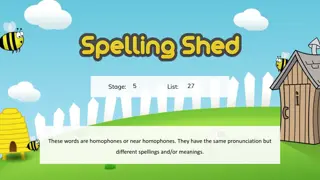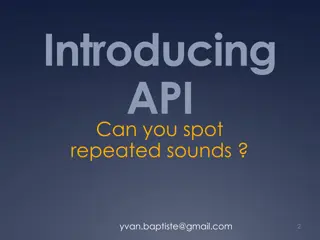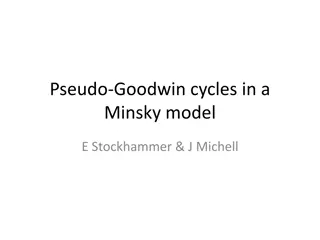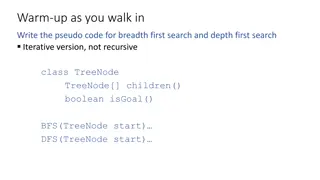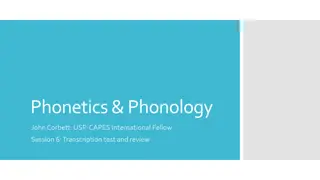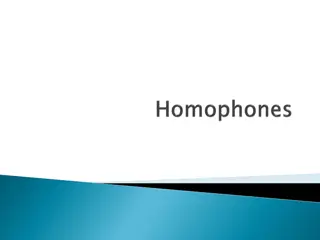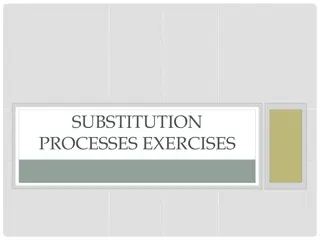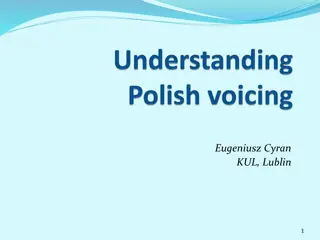Pseudo-homophones: The Phonetic Illusion
Pseudo-homophones are word-like strings that challenge our phonological encoding processes. Martin's research sheds light on the interplay between phonological and orthographic information in lexical decision tasks. Explore how the pseudohomophone effect manifests and influences our cognitive responses.
Download Presentation

Please find below an Image/Link to download the presentation.
The content on the website is provided AS IS for your information and personal use only. It may not be sold, licensed, or shared on other websites without obtaining consent from the author.If you encounter any issues during the download, it is possible that the publisher has removed the file from their server.
You are allowed to download the files provided on this website for personal or commercial use, subject to the condition that they are used lawfully. All files are the property of their respective owners.
The content on the website is provided AS IS for your information and personal use only. It may not be sold, licensed, or shared on other websites without obtaining consent from the author.
E N D
Presentation Transcript
Lab 4: Pseudo-homophones They sound like words, but they aren t
In this class you will; learn about pseudohomophones learn to generate your own study in PsychoPy
When people are asked to decide if a letter string is a word their responses to negative stimuli are slower when the letter string sounds like a real word Time to respond no is greater for bild than for jate Rubenstein, Lewis & Reubenstein (1971) The pseudohomophone effect is evidence that visually presented words are phonologically encoded. This process of phonological encoding occurs before searching the lexicon. Orthographic checks are made after a phonological match is found
Martin (1982) pointed out that the two kinds of non- words used by Rubenstein et al (1971) don t just differ phonologically bild sounds like a word and looks like a word jinf doesn t sound like a word and doesn t look like a word Are people really using phonological information or are they really using orthographic information? Martin showed that if the non-homophonic control words looked as much like a word as the pseudohomophones, the pseudohomophone effect disappeared
Underwood et al (1998) When readers encountered homophones during a training phase of the experiment, then a pseudohomophone effect was observed in a later block of trials which contained no homophones. A second group of readers encountered no homophones during either phase of the experiment and they did not show a pseudohomophone effect. (Canadian Journal of Psychology, 1988, 42, pg 24). People did use phonological evidence when it was necessary and did not use it when it was not needed
The usual procedure is: show one letter string for up to 2s ask the participant to decide whether it is a word this is known as the lexical decision task (LDT) An alternative procedure is the Forced Choice Reaction Time task: show two letter strings for up to 2s (a word & a non- word string) ask participants to decide which letter string is a word
Underwood et als (1988) design A training phase on the lexical decision task One group of participants trained with homophones One group of participants trained without homophones A test phase on the lexical decision task The FCRT adaptation A training phase on the FCRT task One group of participants trained with homophones One group of participants trained without homophones A test phase on the FCRT task
The independent variable Type of Training With homophones Without homophones The dependent variable Difference in time to respond to control strings and to respond to pseudohomophones Unit of measurement seconds
According to Underwood et al (1988) the pseudohomophone effect is found when participants are trained on homophones. Training includes homophones RT for pseudohomophones > RT for control strings Training does not include homophones RT for pseudohomophones = RT for control strings Therefore in this experiment (RT for pseudohomophones - RT for control strings) for homophone training > (RT for pseudohomophones - RT for control strings) for no homophone training
Rubenstein et al (1971). Journal of Verbal Learning and Verbal Behaviour, Vol 10, starting page: 57 Coltheart et al (1977). Attention and Performance, Volume 6, starting page: 535 Martin (1982) Quarterly Journal of Experimental Psychology, Section A Human experimental Psychology, Vol 34, starting page: 395 Underwood (1988) Canadian Journal of Psychology Revue Canadienne de Psychologie, Vol 42, starting page: 24.



